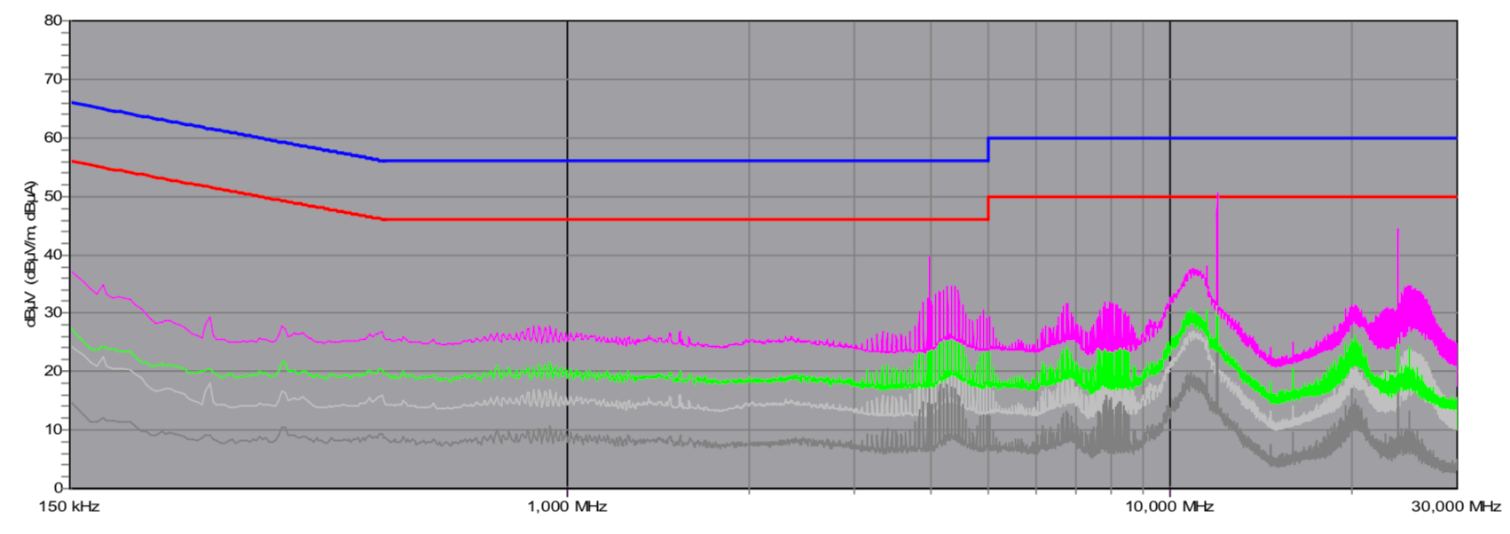Corsair RM650 Power Supply Review: Silent and Efficient
Why you can trust Tom's Hardware
Transient Response Tests, Ripple Measurements and EMC Pre-Compliance Testing
Advanced Transient Response Tests
For details about our transient response testing, please click here.
In the real world, power supplies are always working with loads that change. It's of immense importance, then, for the PSU to keep its rails within the ATX specification's defined ranges. The smaller the deviations, the more stable your PC will be with less stress applied to its components.
We should note that the ATX spec requires capacitive loading during the transient rests, but in our methodology, we also choose to apply a worst case scenario with no additional capacitance on the rails.
Advanced Transient Response at 20% – 200ms
| Voltage | Before | After | Change | Pass/Fail |
|---|---|---|---|---|
| 12V | 12.108V | 11.969V | 1.15% | Pass |
| 5V | 5.043V | 5.002V | 0.81% | Pass |
| 3.3V | 3.297V | 3.230V | 2.03% | Pass |
| 5VSB | 5.022V | 4.992V | 0.60% | Pass |
Advanced Transient Response at 20% – 20ms
| Voltage | Before | After | Change | Pass/Fail |
|---|---|---|---|---|
| 12V | 12.109V | 11.883V | 1.87% | Pass |
| 5V | 5.043V | 4.949V | 1.86% | Pass |
| 3.3V | 3.295V | 3.117V | 5.40% | Fail |
| 5VSB | 5.022V | 4.947V | 1.49% | Pass |
Advanced Transient Response at 20% – 1ms
| Voltage | Before | After | Change | Pass/Fail |
|---|---|---|---|---|
| 12V | 12.109V | 11.890V | 1.81% | Pass |
| 5V | 5.043V | 4.965V | 1.55% | Pass |
| 3.3V | 3.295V | 3.106V | 5.74% | Fail |
| 5VSB | 5.021V | 4.952V | 1.37% | Pass |
Advanced Transient Response at 50% – 200ms
| Voltage | Before | After | Change | Pass/Fail |
|---|---|---|---|---|
| 12V | 12.060V | 11.938V | 1.01% | Pass |
| 5V | 5.033V | 4.9095V | 2.45% | Pass |
| 3.3V | 3.291V | 3.162V | 3.92% | Pass |
| 5VSB | 5.002V | 4.8731V | 2.58% | Pass |
Advanced Transient Response at 50% – 20ms
| Voltage | Before | After | Change | Pass/Fail |
|---|---|---|---|---|
| 12V | 12.061V | 11.929V | 1.09% | Pass |
| 5V | 5.034V | 4.928V | 2.11% | Pass |
| 3.3V | 3.290V | 3.104V | 5.65% | Fail |
| 5VSB | 5.002V | 4.949V | 1.06% | Pass |
Advanced Transient Response at 50% – 1ms
| Voltage | Before | After | Change | Pass/Fail |
|---|---|---|---|---|
| 12V | 12.062V | 11.931V | 1.09% | Pass |
| 5V | 5.034V | 4.925V | 2.17% | Pass |
| 3.3V | 3.289V | 3.107V | 5.53% | Fail |
| 5VSB | 5.002V | 4.928V | 1.48% | Pass |
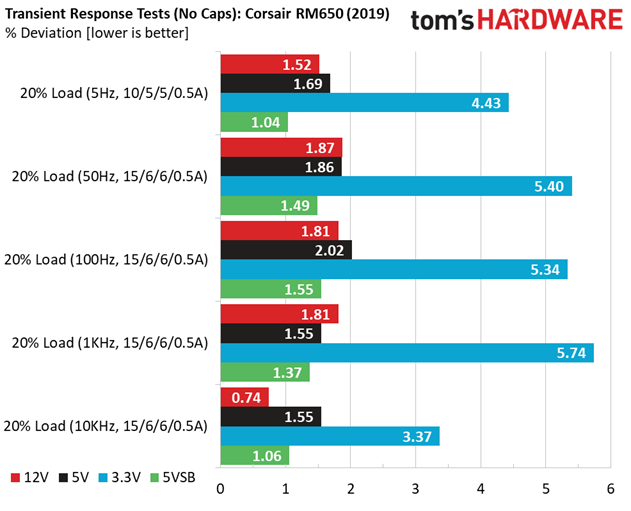
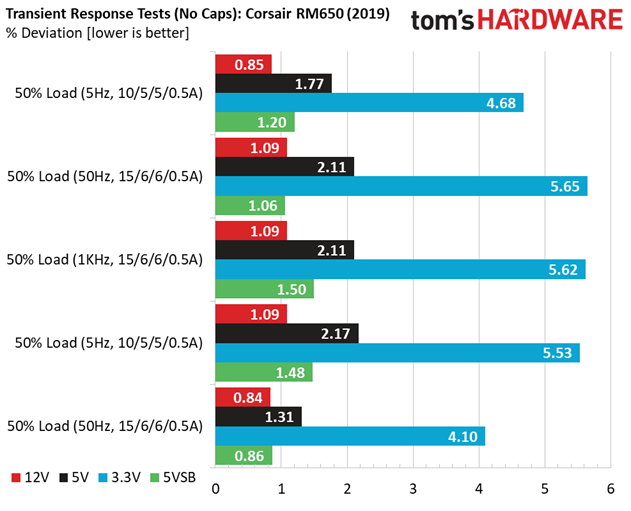
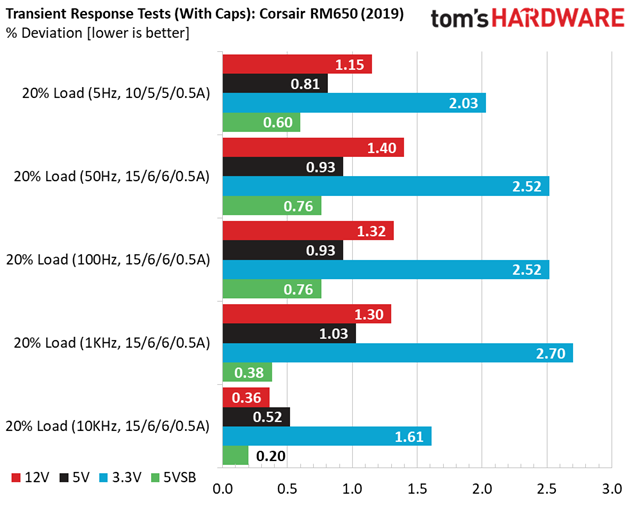
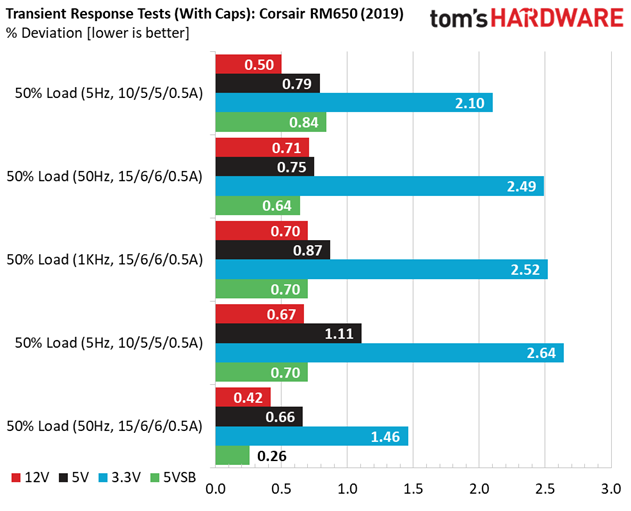
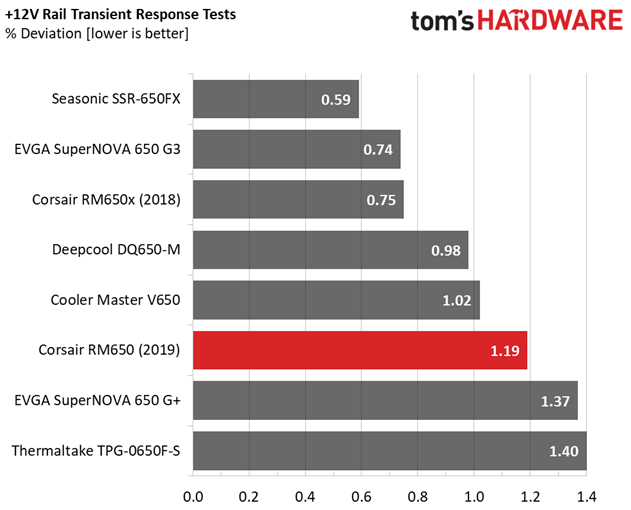
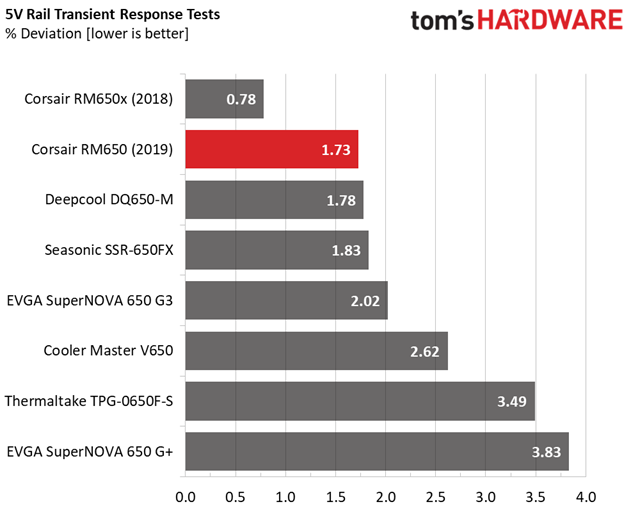
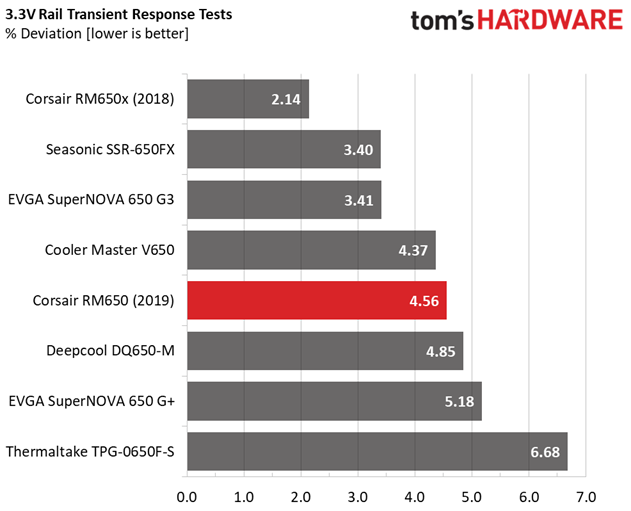
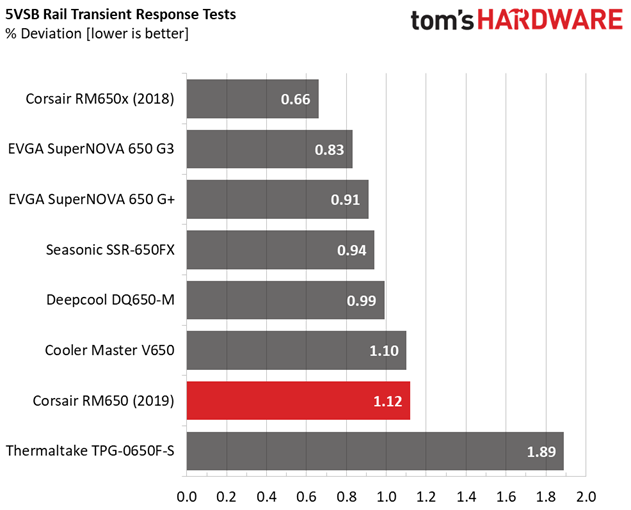
The voltage drops on the +12V rail are notably higher than the ones of the RM650x model. The same applies to the other rails, as well. We would like to see better performance in these tests, which are the closest ones to real life conditions.
Turn-On Transient Tests
In the next set of tests, we measure the PSU's response in simpler transient load scenarios—during its power-on phase. Ideally, we don't want to see any voltage overshoots or spikes since those put a lot of stress on the DC-DC converters of installed components.


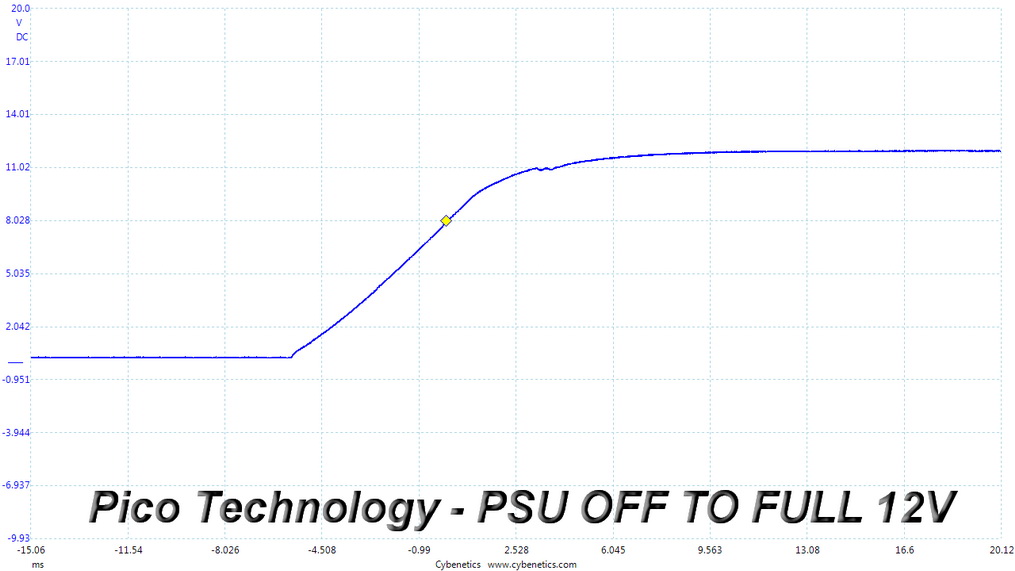
There are no notable spikes and voltage overshoots, so everything is fine here.
Ripple Measurements
Ripple represents the AC fluctuations (periodic) and noise (random) found in the PSU's DC rails. This phenomenon significantly decreases the capacitors' lifespan because it causes them to run hotter. A 10 degrees Celsius increase can cut into a cap's useful life by 50%. Ripple also plays an important role in overall system stability, especially when overclocking is involved.
Get Tom's Hardware's best news and in-depth reviews, straight to your inbox.
The ripple limits, according to the ATX specification, are 120mV (+12V) and 50mV (5V, 3.3V, and 5VSB).
| Test | 12V | 5V | 3.3V | 5VSB | Pass/Fail |
|---|---|---|---|---|---|
| 10% Load | 15.9 mV | 6.9 mV | 9.3 mV | 8.0 mV | Pass |
| 20% Load | 6.3 mV | 7.0 mV | 9.6 mV | 7.9 mV | Pass |
| 30% Load | 10.7 mV | 7.7 mV | 9.7 mV | 7.6 mV | Pass |
| 40% Load | 9.5 mV | 8.0 mV | 10.5 mV | 7.5 mV | Pass |
| 50% Load | 8.8 mV | 8.9 mV | 12.4 mV | 7.5 mV | Pass |
| 60% Load | 10.3 mV | 9.2 mV | 10.6 mV | 8.0 mV | Pass |
| 70% Load | 11.9 mV | 10.0 mV | 11.7 mV | 8.1 mV | Pass |
| 80% Load | 12.0 mV | 10.5 mV | 12.3 mV | 8.3 mV | Pass |
| 90% Load | 12.5 mV | 11.4 mV | 15.1 mV | 8.5 mV | Pass |
| 100% Load | 18.8 mV | 12.0 mV | 15.7 mV | 9.5 mV | Pass |
| 110% Load | 19.3 mV | 12.5 mV | 15.4 mV | 9.2 mV | Pass |
| Crossload 1 | 20.9 mV | 9.9 mV | 14.3 mV | 8.5 mV | Pass |
| Crossload 2 | 17.7 mV | 10.4 mV | 13.0 mV | 8.3 mV | Pass |
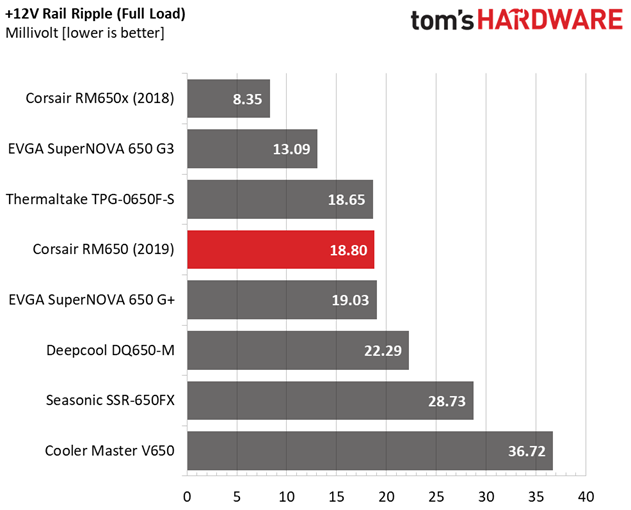
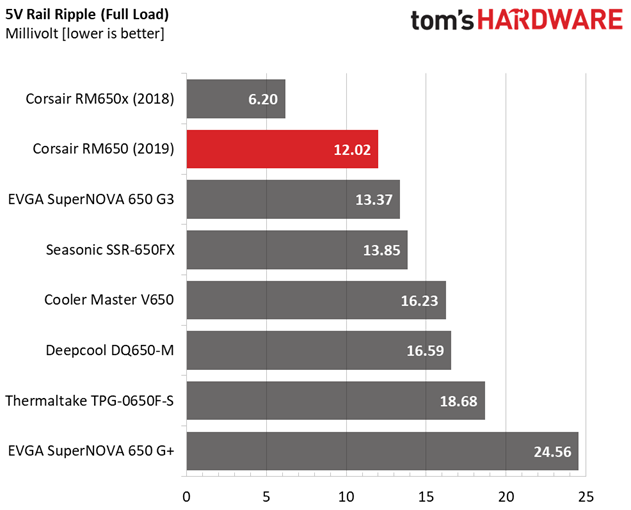
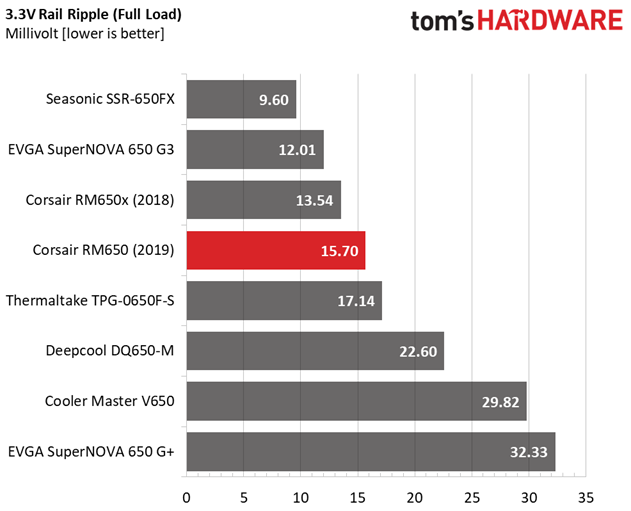
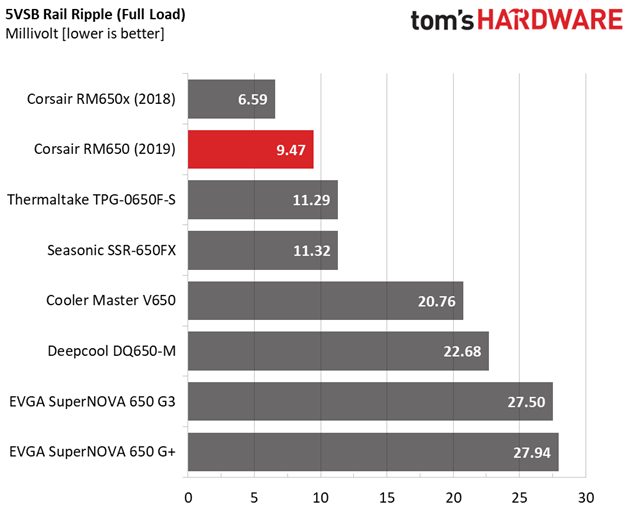
The ripple suppression is great on all rails. With extra caps on the modular cables, the RM650 would easily reach the awesome ripple suppression of the RM650x model, but those caps make the cables bulky, and this is why the majority of users don't like them.
Ripple At Full Load
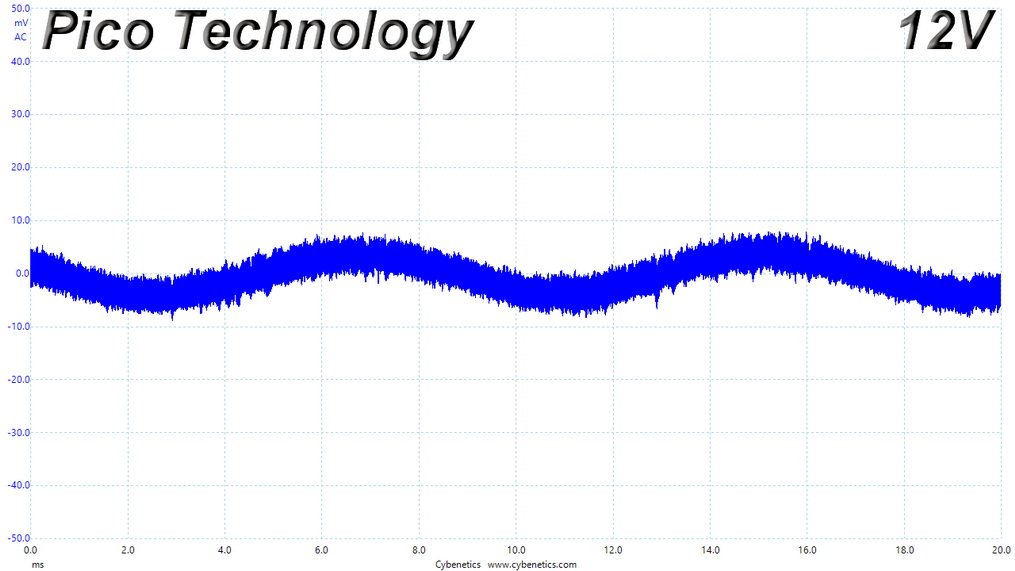
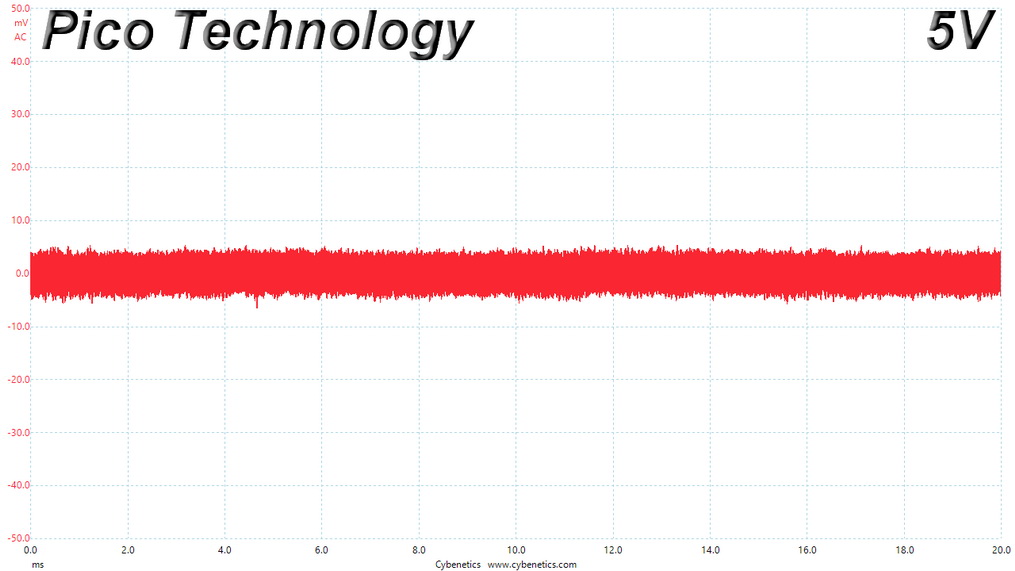
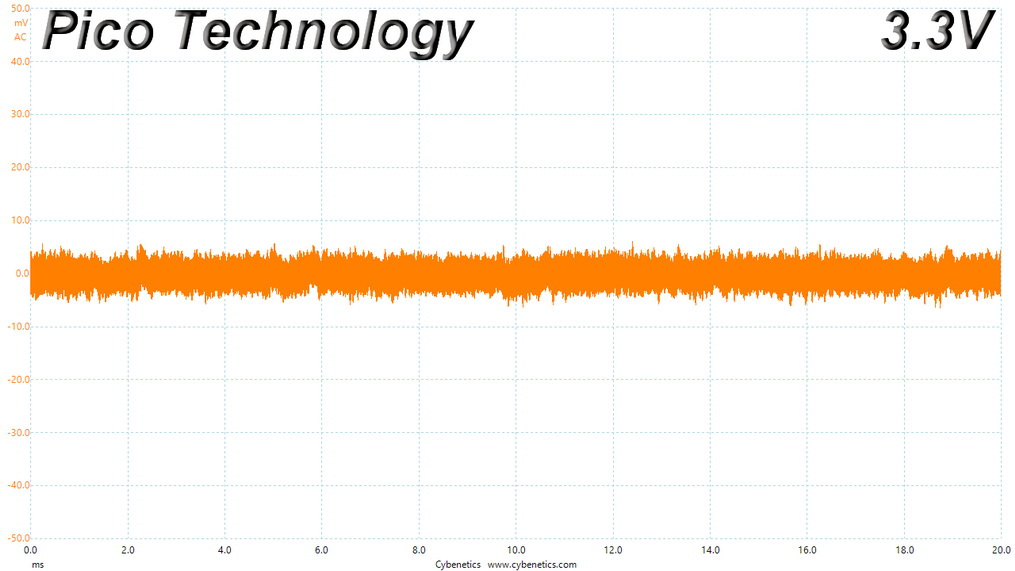
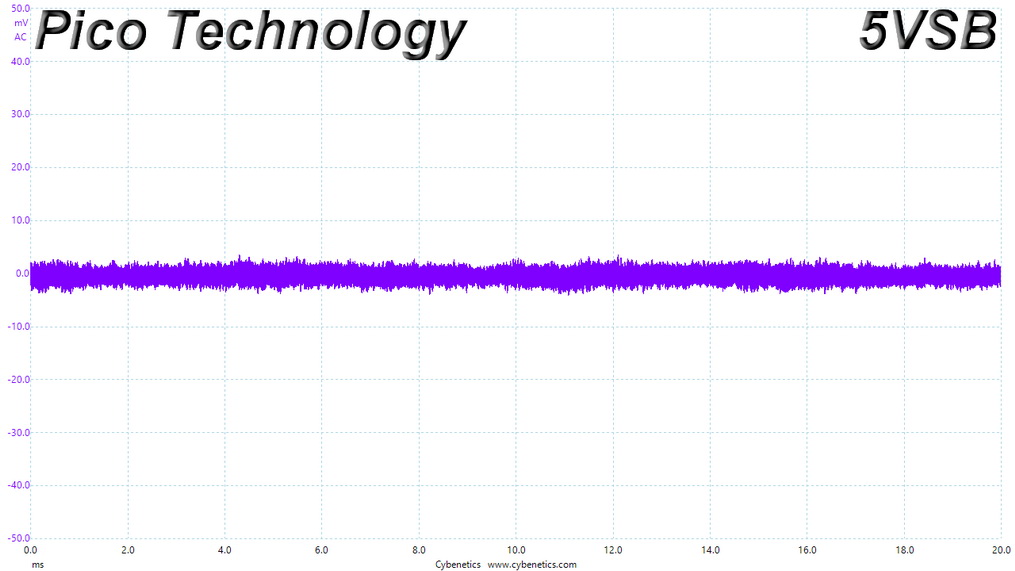
Ripple At 110% Load
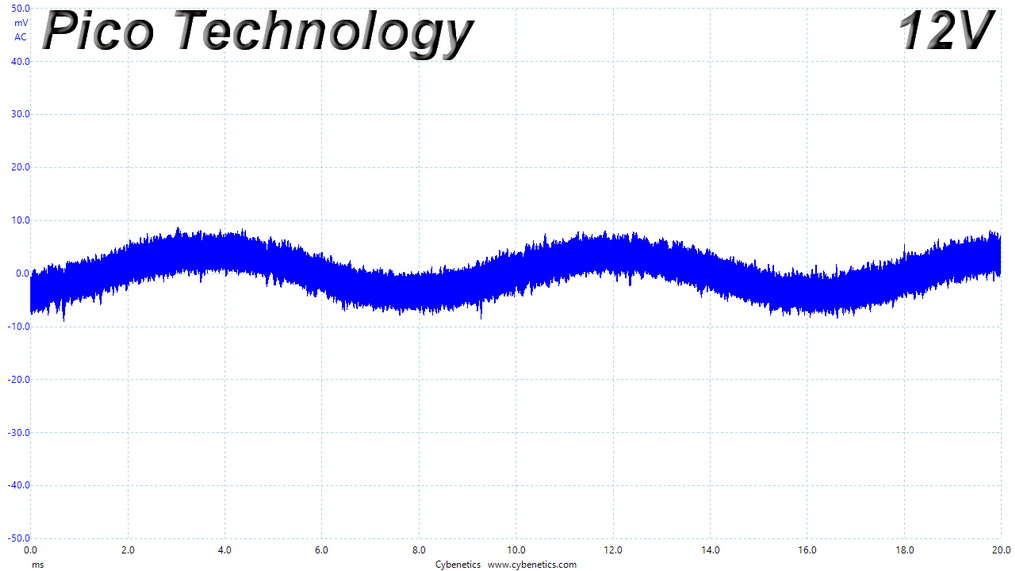
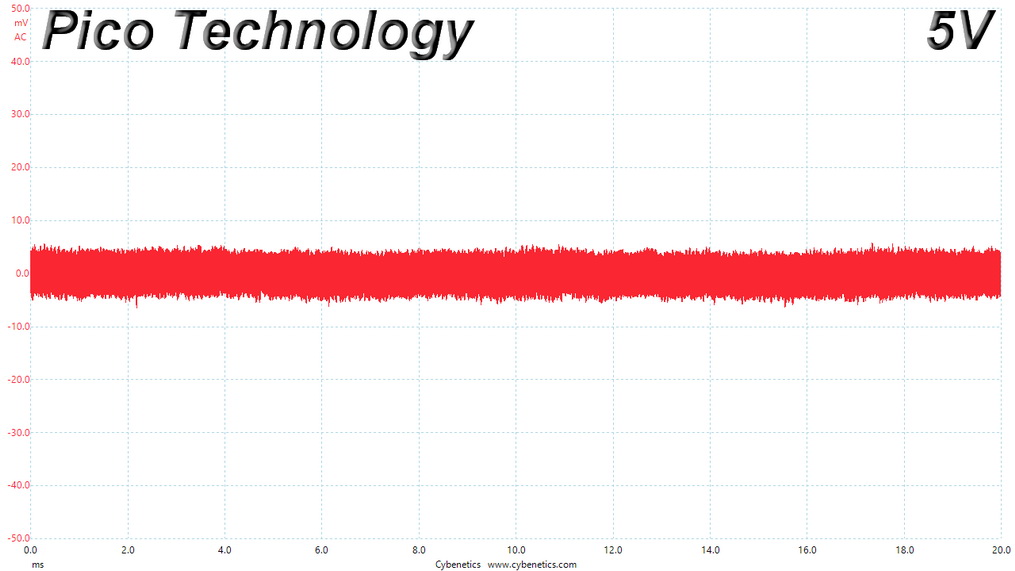
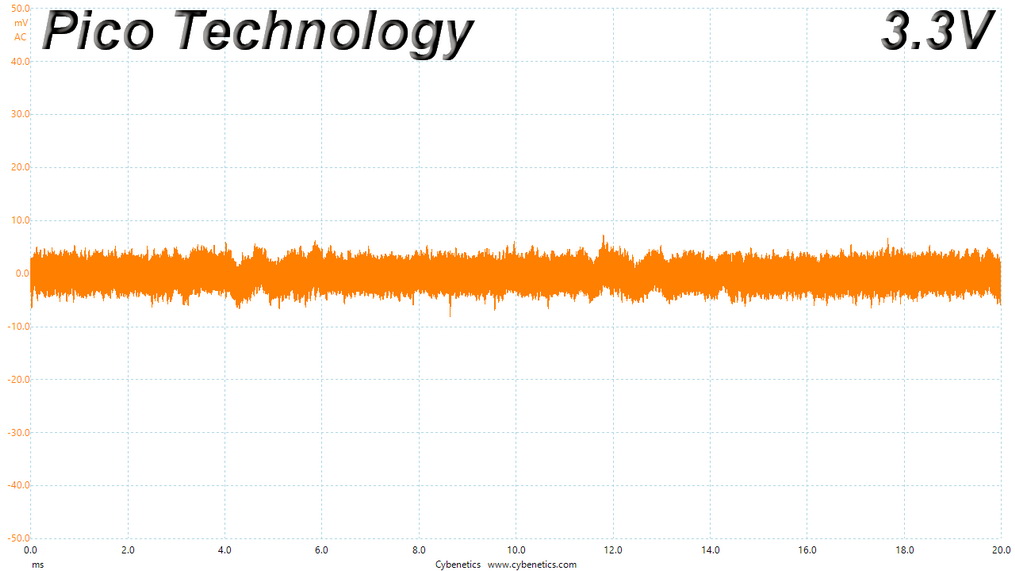
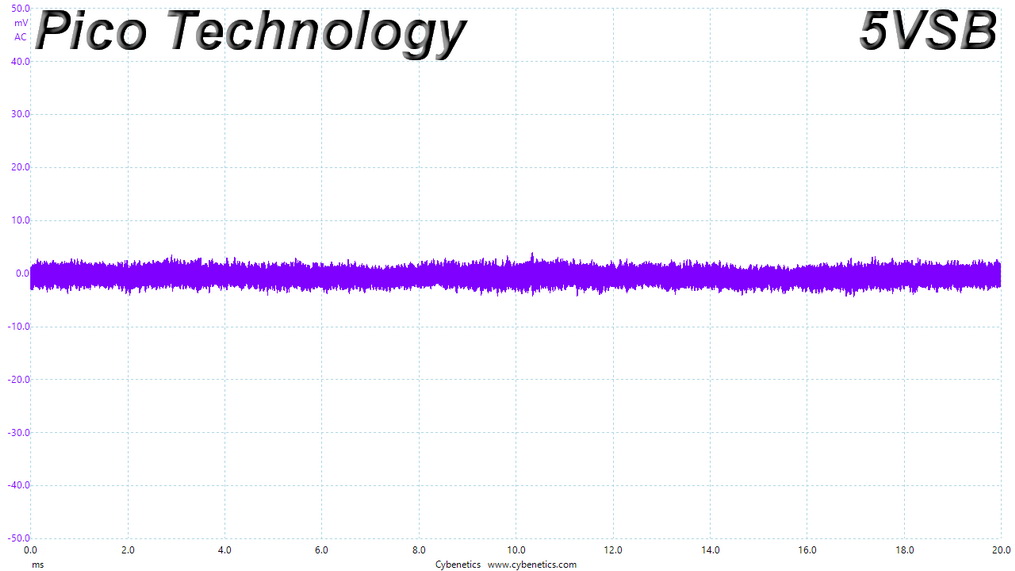
Ripple At Cross-Load 1
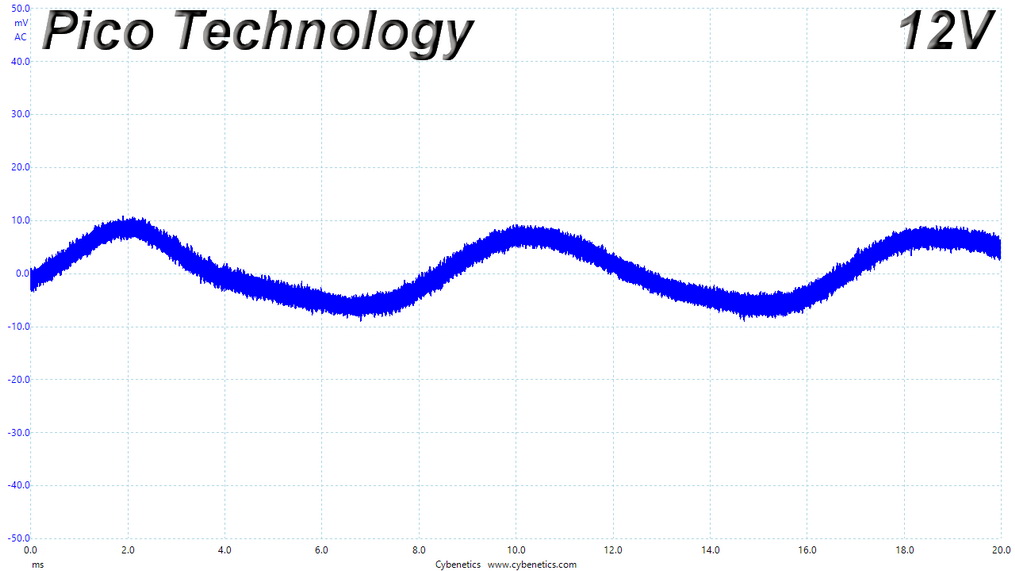
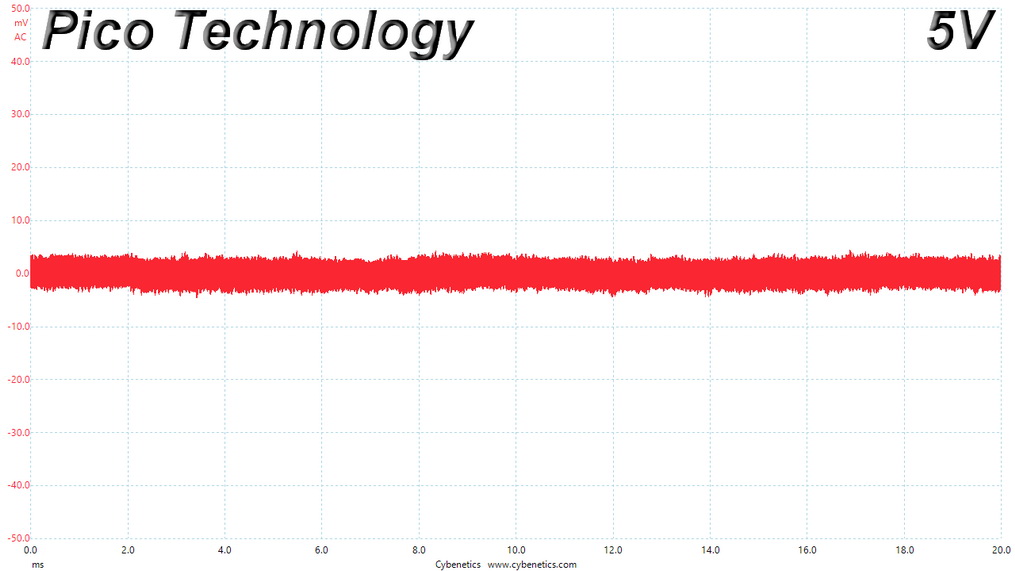
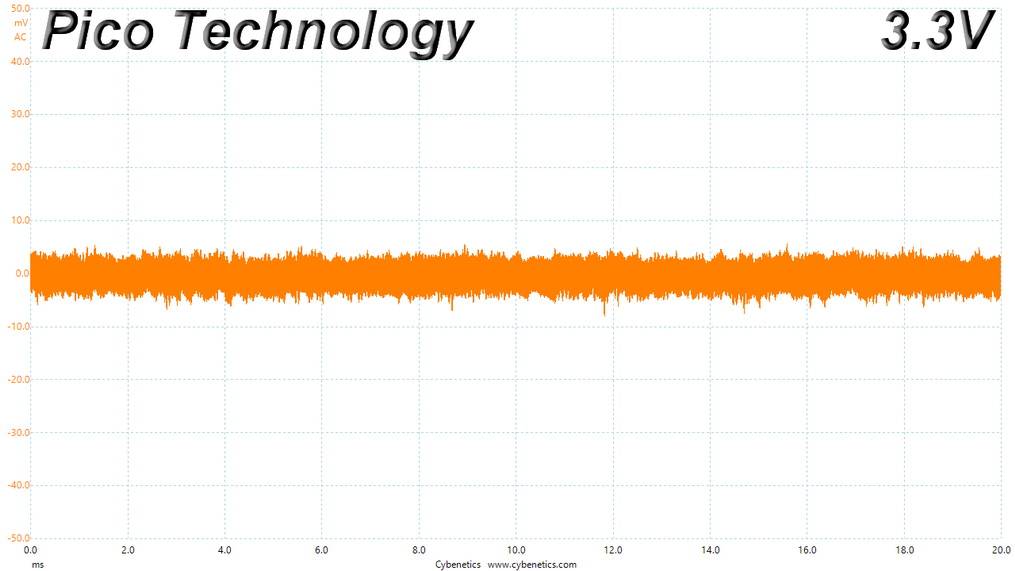
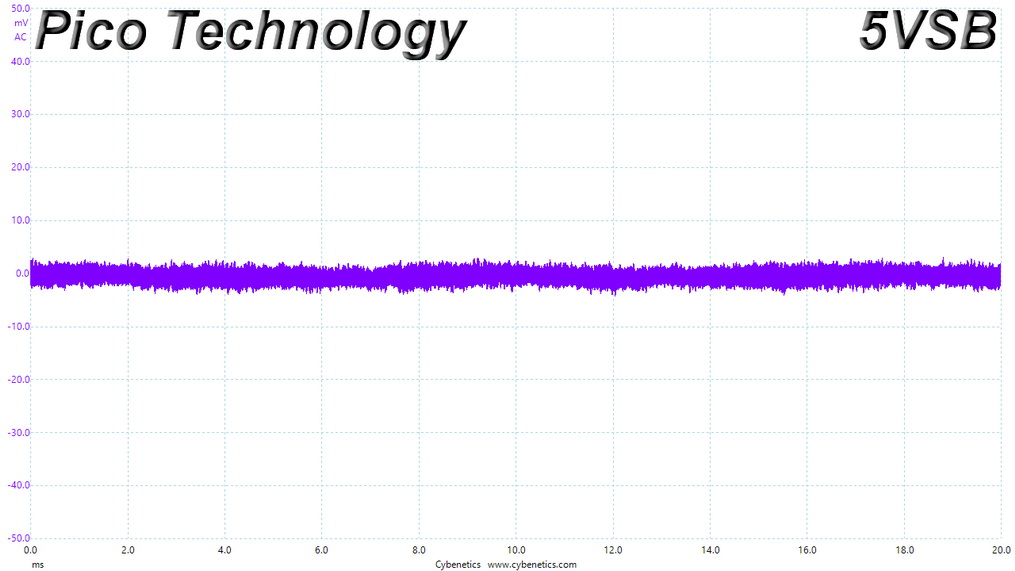
Ripple At Cross-Load 2
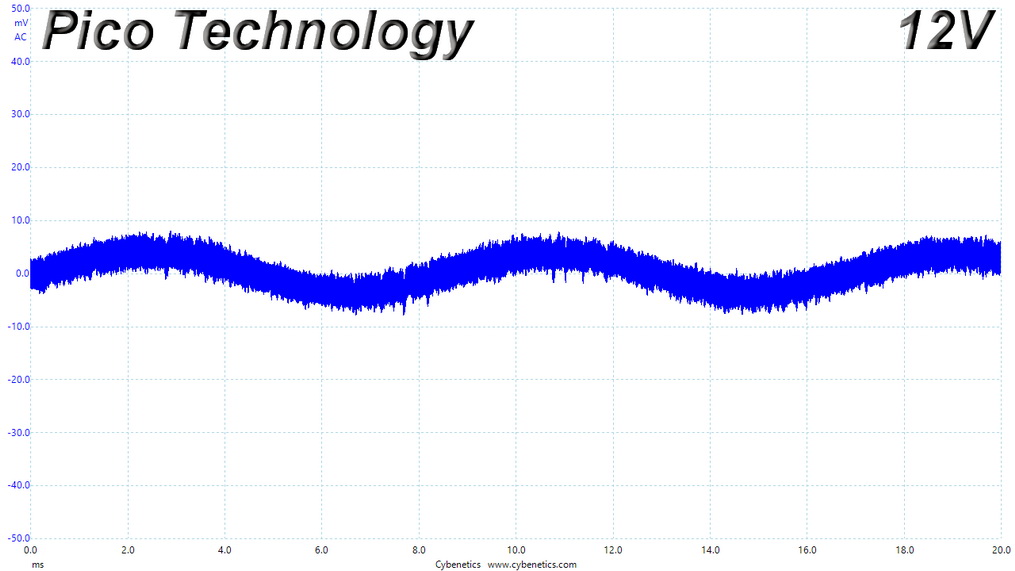
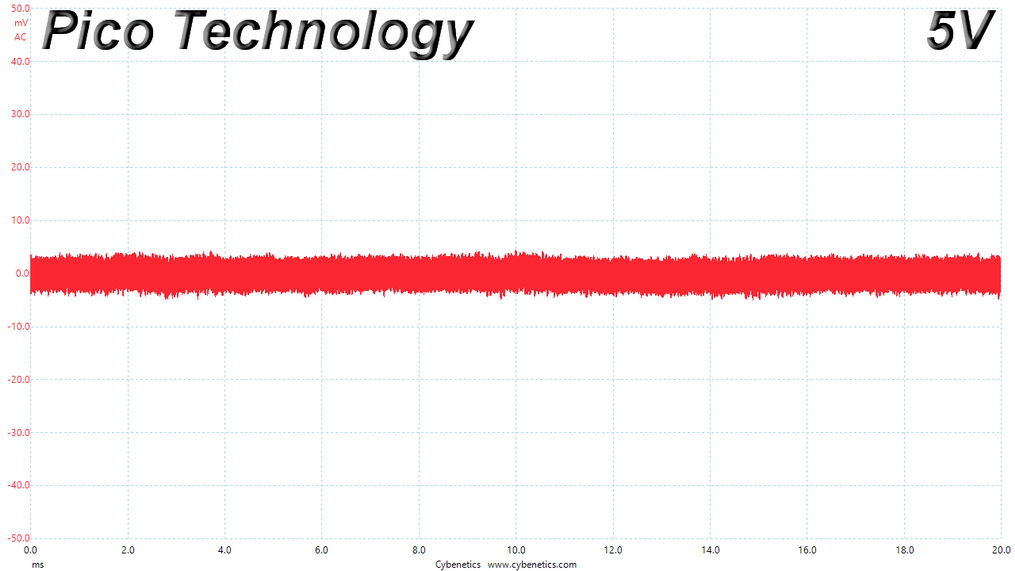
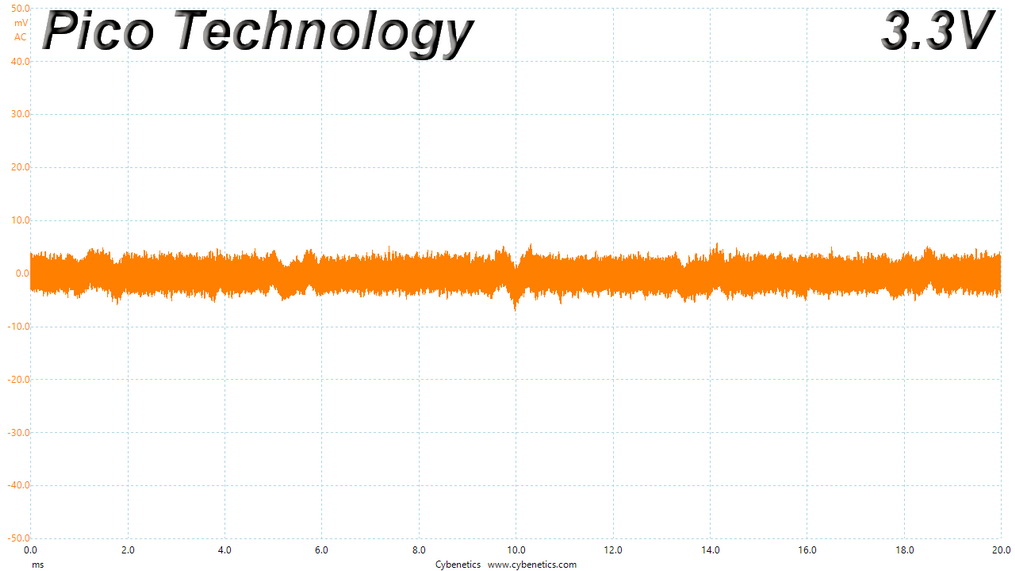
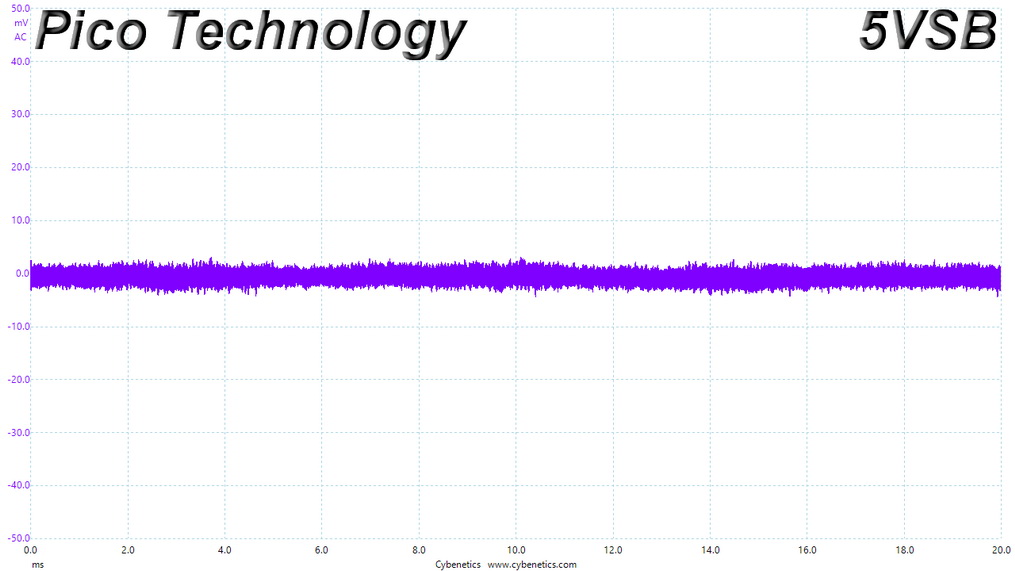
EMC Pre-Compliance Testing – Average & Peak EMI Detector Results
Electromagnetic Compatibility (EMC) is the ability of a device to operate properly in its environment without disrupting the proper operation of other close-by devices.
Electromagnetic Interference (EMI) stands for the electromagnetic energy a device emits, and it can cause problems in other close-by devices if too high. For example, it can be the cause of increased static noise in your headphones or/and speakers.
We notice some EMI spikes, but none of them goes higher than the respective limits.
MORE: Best Power Supplies
MORE: How We Test Power Supplies
MORE: All Power Supply Content
Current page: Transient Response Tests, Ripple Measurements and EMC Pre-Compliance Testing
Prev Page Protection Features, DC Power Sequencing, Cross-Load Tests and Infrared Images Next Page Performance, Noise and Efficiency
Aris Mpitziopoulos is a contributing editor at Tom's Hardware, covering PSUs.
-
jonnyguru Some background:Reply
The new Intel specification requires better efficiency at 2%-10% load and new timings (T1 and T3 to support modern standby mode). This was not easy/cheap to achieve, so Corsair couldn't just replace the current RMx in the market with a new, more expensive version without tangible differences. So the capacitors and fan was "down graded" (though Hong Hua is a fantastic fan manufacturer) to allow this "new version" of the RM to meet an acceptable price point.
Fun fact: Removing the caps from the cables saved A LOT of money. As you can see, it didn't have much impact. The caps in the cables in other models are only there to appease reviewers (like Aris) that compare ripple from one model to the next within mV of each other. -
Aris_Mp Replyjonnyguru said:Some background:
The new Intel specification requires better efficiency at 2%-10% load and new timings (T1 and T3 to support modern standby mode). This was not easy/cheap to achieve, so Corsair couldn't just replace the current RMx in the market with a new, more expensive version without tangible differences. So the capacitors and fan was "down graded" (though Hong Hua is a fantastic fan manufacturer) to allow this "new version" of the RM to meet an acceptable price point.
Fun fact: Removing the caps from the cables saved A LOT of money. As you can see, it didn't have much impact. The caps in the cables in other models are only there to appease reviewers (like Aris) that compare ripple from one model to the next within mV of each other.
Thank you Jon for the explanation on why the price had to drop so little compared to the RMx. Every time there is an ATX change, the production cost goes higher :(
the in-cable caps provide the wow factor he he. -
refillable ReplyAris_Mp said:Thank you Jon for the explanation on why the price had to drop so little compared to the RMx.
Wait, saw this review earlier but I realized that it has Su'scon caps. Su'scon is the "avoid" tier in your own capacitor tier list. Red flag? Makes me think that this series is even more useless than I previously thought especially that the RM650X can be bought for so cheap these days. -
jonnyguru Replyrefillable said:Wait, saw this review earlier but I realized that it has Su'scon caps. Su'scon is the "avoid" tier in your own capacitor tier list. Red flag? Makes me think that this series is even more useless than I previously thought especially that the RM650X can be bought for so cheap these days.
Aris has yet to visit a capacitor factory. -
refillable Reply
I don't get it, but I pretended I do :LOL:jonnyguru said:Aris has yet to visit a capacitor factory. -
jonnyguru Replyrefillable said:I don't get it, but I pretended I do :LOL:
Since moving from being a reviewer to someone working in the industry, I've learned that 75% of what is said in reviews, including a lot of the stuff I have said in reviews, is total B.S. -
refillable Replyjonnyguru said:Since moving from being a reviewer to someone working in the industry, I've learned that 75% of what is said in reviews, including a lot of the stuff I have said in reviews, is total B.S.
Thanks for clearing that up.
